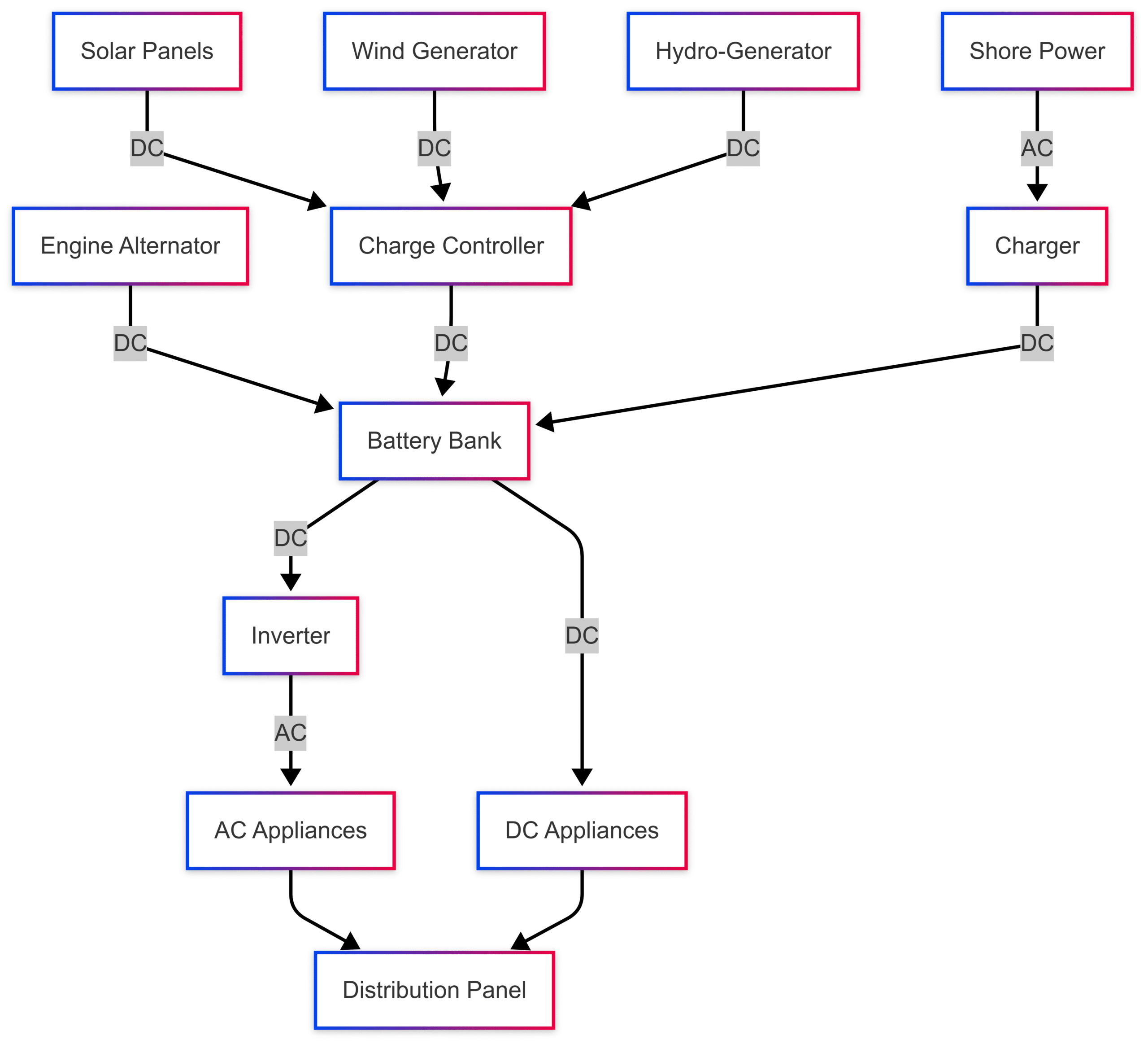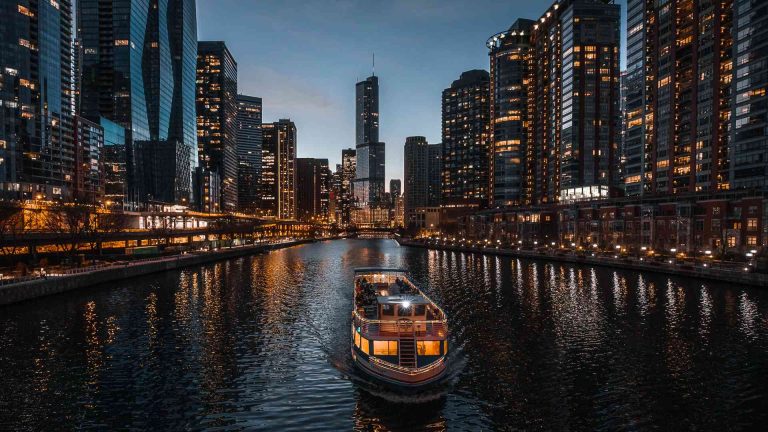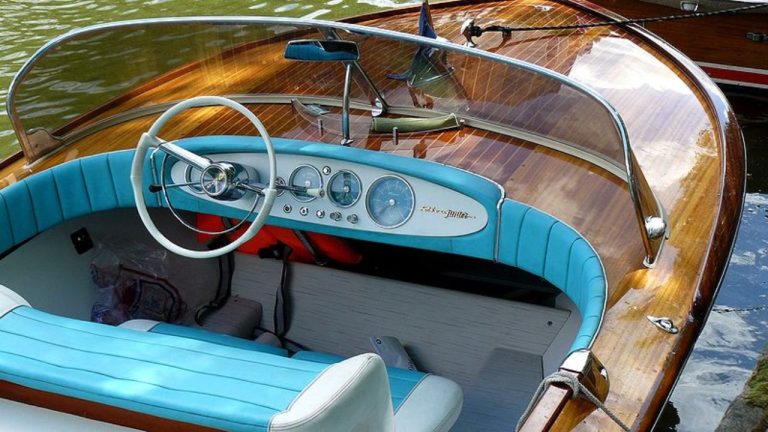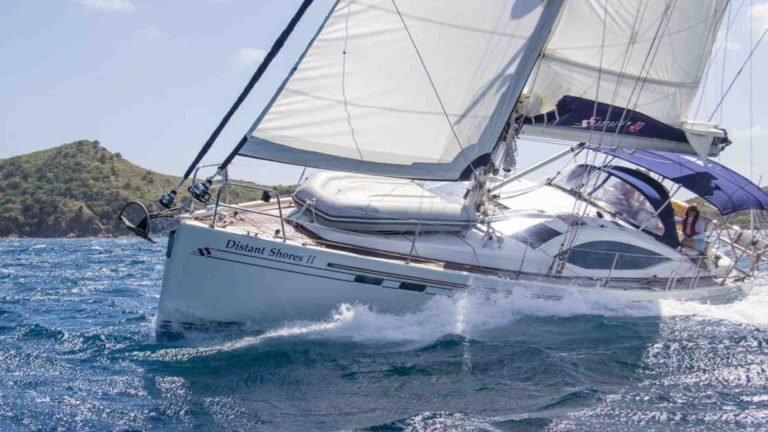How does electricity work on boats?
Discover how electricity works on boats, from 220V systems and inverters to solar panels and hydro-generators, ensuring power for navigation and comfort.
Electricity is the lifeblood of modern boating, powering everything from navigation systems to onboard comforts. Unlike homes connected to a grid, boats must generate, store, and manage their own power, often in challenging marine environments. Understanding how electricity works on boats is crucial for safe and efficient operation, whether you’re on a short coastal cruise or a long offshore adventure. This article explores the components, generation methods, and management of marine electrical systems, offering practical insights for sailors and yacht owners.
The Basics of Marine Electrical Systems
Marine electrical systems are designed to meet two primary needs: running the boat’s essential systems and providing onboard amenities. These systems typically operate on two types of current: Direct Current (DC) and Alternating Current (AC). DC power, usually 12V or 24V, is stored in batteries and powers most onboard electronics, such as lights, navigation equipment, and autopilots. AC power, typically 220V or 110V, mirrors household electricity and is used for high-power appliances like air conditioners or microwaves when connected to shore power or generated onboard.
Key Components of a Marine Electrical System
A marine electrical system comprises several components that work together to generate, store, and distribute power:
- Batteries: The heart of the system, batteries store DC power. There are two types:
- Engine Battery: A lead-acid battery dedicated to starting the engine.
- House Batteries: Deep-cycle batteries (often lithium) that power onboard systems like lights, refrigerators, and electronics.
- Power Generation Sources:
- Shore Power: Provides 220V or 110V AC when docked, charging batteries and running appliances.
- Engine Alternator: Generates DC power while the engine runs, charging batteries.
- Generators (Gensets): Diesel or petrol units that produce AC power for high-demand systems.
- Solar Panels: Convert sunlight into DC power, ideal for off-grid cruising.
- Wind Generators: Harness wind energy to charge batteries, effective in windy conditions.
- Hydro-Generators: Produce power from water flow while sailing, efficient for long passages.
- Inverters and Chargers:
- Inverters: Convert 12V DC from batteries to 220V AC for household-like appliances.
- Chargers: Convert AC shore power to DC to charge batteries.
- Inverter/Chargers: Combine both functions for versatility.
- Charge Controllers: Regulate power from solar panels or wind generators to prevent battery overcharging. Maximum Power Point Tracking (MPPT) controllers are more efficient than Pulse Width Modulation (PWM) controllers.
- Distribution Systems: Panels and wiring distribute power to onboard devices, ensuring safe and efficient delivery.
Here’s a simplified diagram of a marine electrical system:

Power Consumption on Boats
Understanding power consumption is key to designing an efficient electrical system. Consumption varies based on the boat’s size, equipment, and usage. Below is a sample load analysis for a 40-foot sailing yacht:
| Device | Power (Watts) | Amps (12V) | Hours/Day | Daily Consumption (Ah) |
|---|---|---|---|---|
| LED Lights | 10 | 0.83 | 6 | 5 |
| Refrigerator | 50 | 4.17 | 24 | 100 |
| Autopilot | 60 | 5.00 | 12 | 60 |
| Chartplotter | 30 | 2.50 | 12 | 30 |
| Phone Charger | 12 | 1.00 | 2 | 2 |
| Total | 197 Ah/day |
This yacht requires approximately 200 Ah per day. A battery bank should ideally have 2x this capacity (400 Ah) to ensure reliability, with charging capacity between 40A and 100A.
Generating Electricity on Boats
Boats rely on multiple methods to generate electricity, each suited to different scenarios:
1. Shore Power
When docked at a marina, boats can connect to shore power (110V or 220V AC) via a shore power cable. This charges batteries and powers AC appliances directly. Key considerations:
- Voltage Compatibility: Use a multi-voltage charger or transformer for global cruising (110V in the Americas, 220V/240V elsewhere).
- Safety: Use Residual Current Devices (RCDs) and isolation transformers to prevent galvanic corrosion and electrical shocks.
- Connectors: Carry adapters (e.g., 15A caravan-style plugs or pigtail adapters) for varying marina sockets.
2. Engine Alternator
The engine’s alternator generates DC power while running, charging both engine and house batteries. However, it’s not the most efficient for long-term charging:
- Output: Typically 50-100A, depending on the alternator.
- Efficiency: External regulators (e.g., Mastervolt, Sterling) can optimize charging by maximizing alternator output.
- Drawbacks: Running the engine solely for charging consumes fuel and may wear the engine if operated at low RPMs.
3. Generators (Gensets)
Generators provide AC power for high-demand systems and battery charging. They come in two types:
- Diesel Gensets: Efficient for larger boats, producing 2-6 kVA. Brands like Nanni and Fischer Panda are popular. Installation requires proper fuel and exhaust systems.
- Petrol Generators: Portable units (e.g., Honda EU2000i) produce 1-3 kVA. They’re noisy and less safe due to flammable fuel but are cost-effective for smaller boats.
| Generator Type | Power Output | Fuel Consumption | Price Range (USD) |
|---|---|---|---|
| Honda EU2000i (Petrol) | 2 kVA | 0.25-1 L/hr | $1,000-$1,500 |
| Fischer Panda 4000s (Diesel) | 4 kVA | 0.5-1.5 L/hr | $8,000-$12,000 |
4. Solar Panels
Solar panels are increasingly popular for their eco-friendliness and low maintenance. They produce DC power, ideal for off-grid cruising:
- Types: Monocrystalline (high efficiency, rigid), polycrystalline, or flexible thin-film panels.
- Output: A 150W panel produces ~46.9 Ah/day in optimal conditions.
- Challenges: Shade drastically reduces output (e.g., 25% shading can cut power by 75%). Mount panels high and clear of obstructions.
- Controllers: MPPT controllers maximize efficiency by optimizing voltage, unlike PWM controllers.
5. Wind Generators
Wind turbines convert wind energy into DC power, effective in windy regions:
- Output: Models like the Rutland 914i produce 140W at 22 knots, though output drops at lower apparent wind speeds.
- Brands: Silentwind, Ampair, and Marlec offer reliable options.
- Challenges: Noise and vibration can be issues; performance depends on wind speed and boat direction.
6. Hydro-Generators
Hydro-generators produce power from water flow while sailing, ideal for long passages:
- Output: A 300W unit generates ~100 Ah/day at 6 knots.
- Types: Stern-mounted units (e.g., Sail-Gen) or towable models (e.g., Aquair 100).
- Challenges: Drag (up to 0.5 knots) and potential fouling in older towable models.
Storing Electricity: Marine Batteries
Batteries are critical for storing power. Choosing the right type impacts performance and longevity:
- Lead-Acid Batteries: Affordable but heavy, with a 50% depth of discharge (DoD). Suitable for engine batteries.
- AGM Batteries: Maintenance-free, with better DoD (50-60%) than flooded lead-acid.
- Lithium Batteries: Lightweight, with 80-90% DoD, faster charging, and longer lifespan (e.g., Battle Born 100Ah 12V LiFePO4, $900-$1,200). Ideal for house batteries.
| Battery Type | Capacity (Ah) | Weight (kg) | Lifespan (Cycles) | Price (USD) |
|---|---|---|---|---|
| Lead-Acid | 100 | 30-35 | 500-800 | $100-$200 |
| AGM | 100 | 25-30 | 800-1,200 | $200-$350 |
| Lithium | 100 | 14-16 | 2,000-5,000 | $900-$1,200 |
Lithium batteries are recommended for house systems due to their efficiency and space-saving benefits.
Converting Power: Inverters and Chargers
Inverters and chargers bridge the gap between DC and AC power:
- Inverters: Convert 12V DC to 220V AC. Small inverters (300-600W, $100-$300) power devices like laptops, while larger units (2-3 kW, $500-$1,500) handle appliances like microwaves.
- Chargers: Convert AC shore power to DC for battery charging. A 40A charger ($200-$500) suits a 400Ah battery bank.
- Combined Inverter/Chargers: Units like Victron MultiPlus ($1,000-$2,000) offer seamless switching between charging and inverting.
Charging Strategies for Efficiency
Efficient battery charging extends autonomy and reduces fuel use:
- Multi-Stage Charging: Modern chargers use bulk, absorption, and float phases to optimize charging without overcharging.
- Smart Charging: MPPT controllers and external alternator regulators ensure maximum power extraction from solar panels and alternators.
- Conservation Tips:
- Use LED lights to reduce consumption (e.g., 10W vs. 60W for incandescent).
- Cycle the refrigerator off periodically, using ice bricks to maintain cooling.
- Charge devices via 12V USB adapters ($10-$20) instead of inverters to save power.
Sustainable Power Solutions
Sustainability is a growing focus in yachting, driven by environmental concerns and the desire for autonomy. Solar panels, wind turbines, and hydro-generators reduce reliance on fossil fuels. Emerging technologies include:
- Electric Yachts: Models like the Sunreef 60 Eco ($2-3 million) use solar panels and electric motors for near-silent, zero-emission cruising.
- Hybrid Systems: Combine diesel generators with battery packs and electric motors (e.g., Oceanvolt systems, $10,000-$50,000).
- Fuel Cells: EFOY ethanol fuel cells ($3,000-$7,000) produce power quietly with minimal waste, ideal for smaller boats.
Safety Considerations
Electricity and water are a dangerous mix, so safety is paramount:
- Test Equipment: Use outlet and voltage testers ($10-$50) to check shore power safety.
- Safe Connections: Turn off breakers before plugging into shore power and use one hand to minimize shock risk.
- Battery Management Systems (BMS): Ensure lithium batteries have a BMS to prevent overcharging or thermal runaway.
- Professional Installation: Hire experts for complex wiring to avoid shocks, fires, or system damage.
Practical Example: Powering a Week-Long Cruise
Consider a 40-foot yacht on a week-long cruise without shore power:
- Daily Load: 200 Ah (from table above).
- Battery Bank: 400 Ah lithium (e.g., 4x Battle Born 100Ah, ~$4,800).
- Power Generation:
- 300W solar panels (2x 150W, ~$500) produce ~90 Ah/day in sunny conditions.
- 300W hydro-generator (~$2,000) produces ~100 Ah/day at 6 knots.
- Engine alternator (50A) for backup, used 2 hours/day (~100 Ah).
- Inverter: 600W inverter (~$200) for occasional AC use (e.g., laptop charging).
- Conservation: LED lights, periodic fridge cycling, and USB charging minimize consumption.
This setup ensures sufficient power with redundancy, balancing sustainability and reliability.
Choosing the Right System
The best electrical system depends on your boating style:
- Weekend Sailors: Shore power and engine alternators suffice, with small solar panels (~$200-$500) for topping up.
- Long-Distance Cruisers: Combine lithium batteries, solar panels, and hydro-generators for autonomy. Budget: $5,000-$15,000.
- Luxury Yachts: Diesel gensets and hybrid systems support high-power amenities. Budget: $10,000-$50,000+.
Conclusion
Electricity on boats is a complex but manageable system that powers navigation, safety, and comfort. By understanding components like batteries, inverters, and renewable energy sources, sailors can design systems tailored to their needs. Whether opting for traditional diesel generators or sustainable solutions like solar and hydro-generators, careful planning ensures reliable power at sea. With advancements in electric yachts and eco-friendly technologies, the future of marine power is greener and more autonomous than ever.
Happy Boating!
Share How does electricity work on boats? with your friends and leave a comment below with your thoughts.
Read How Do Sails Actually Work: Full Beginners Guide until we meet in the next article.






